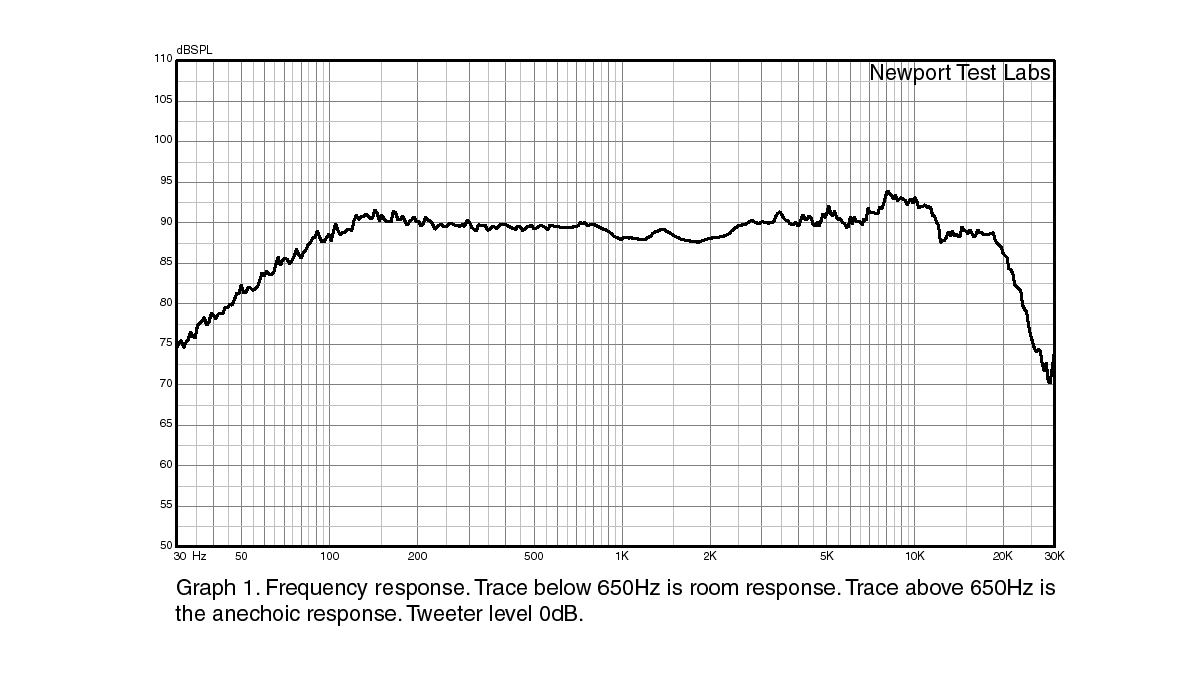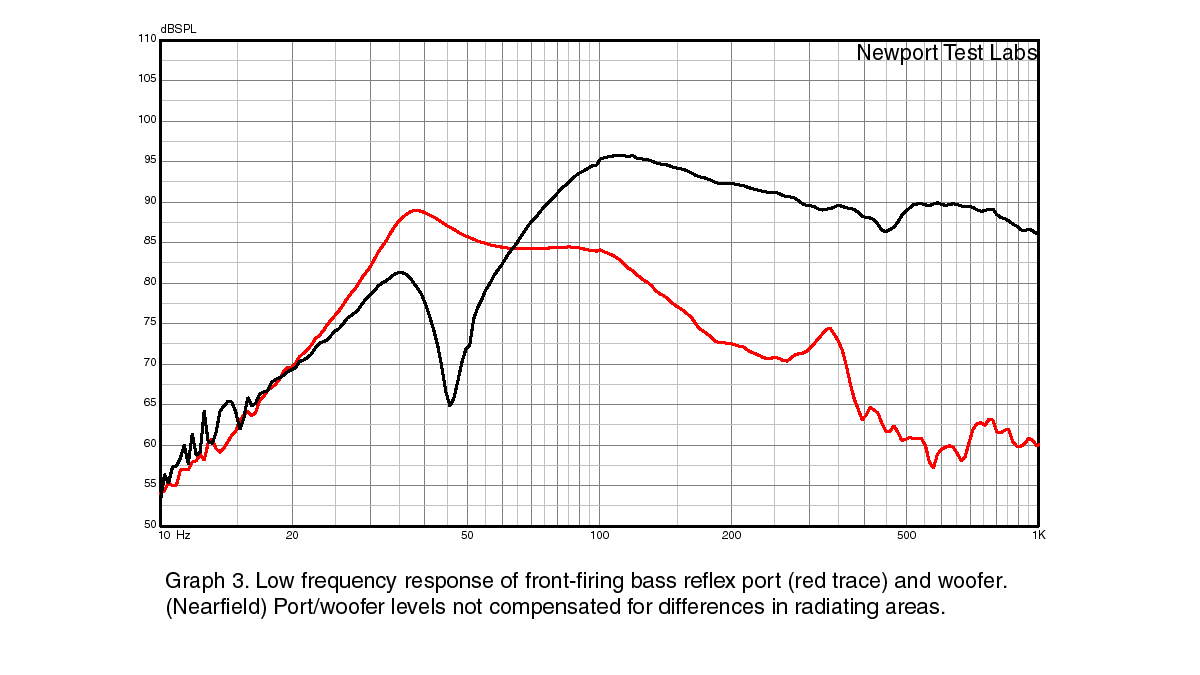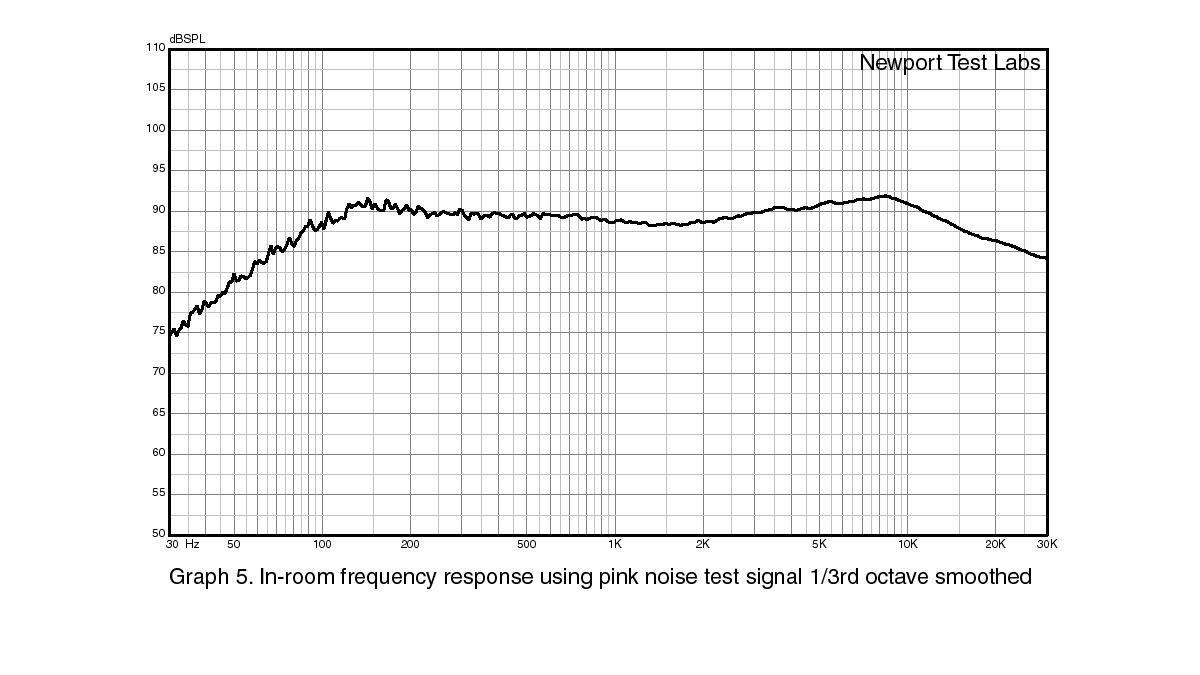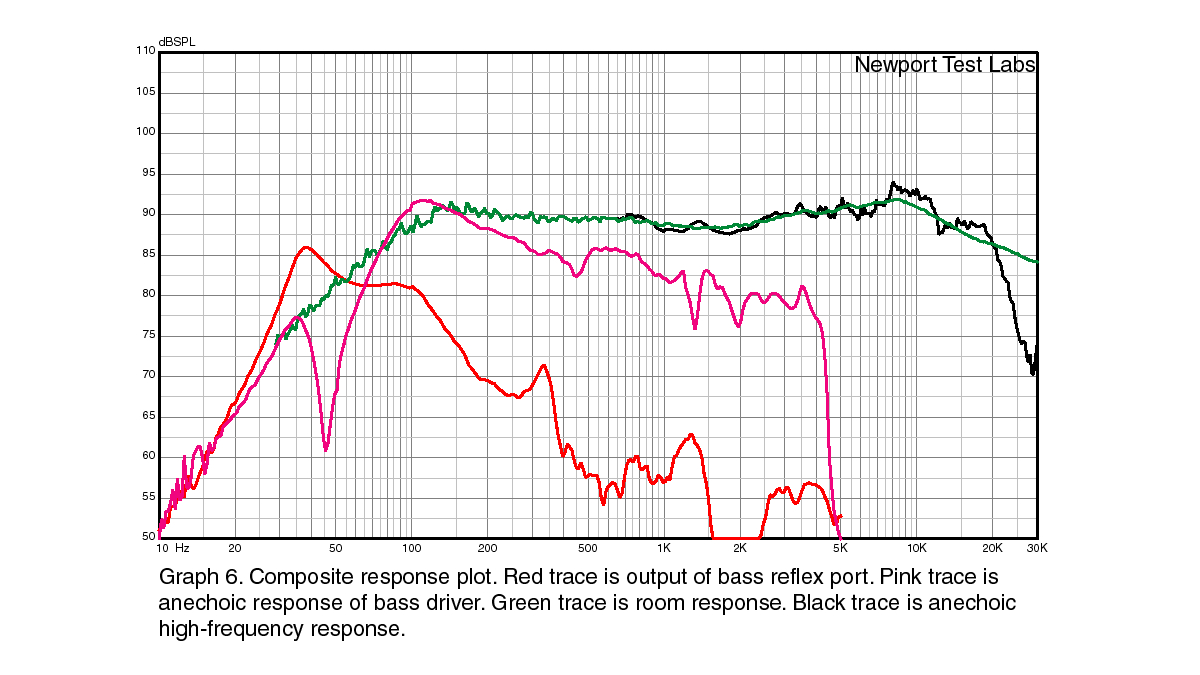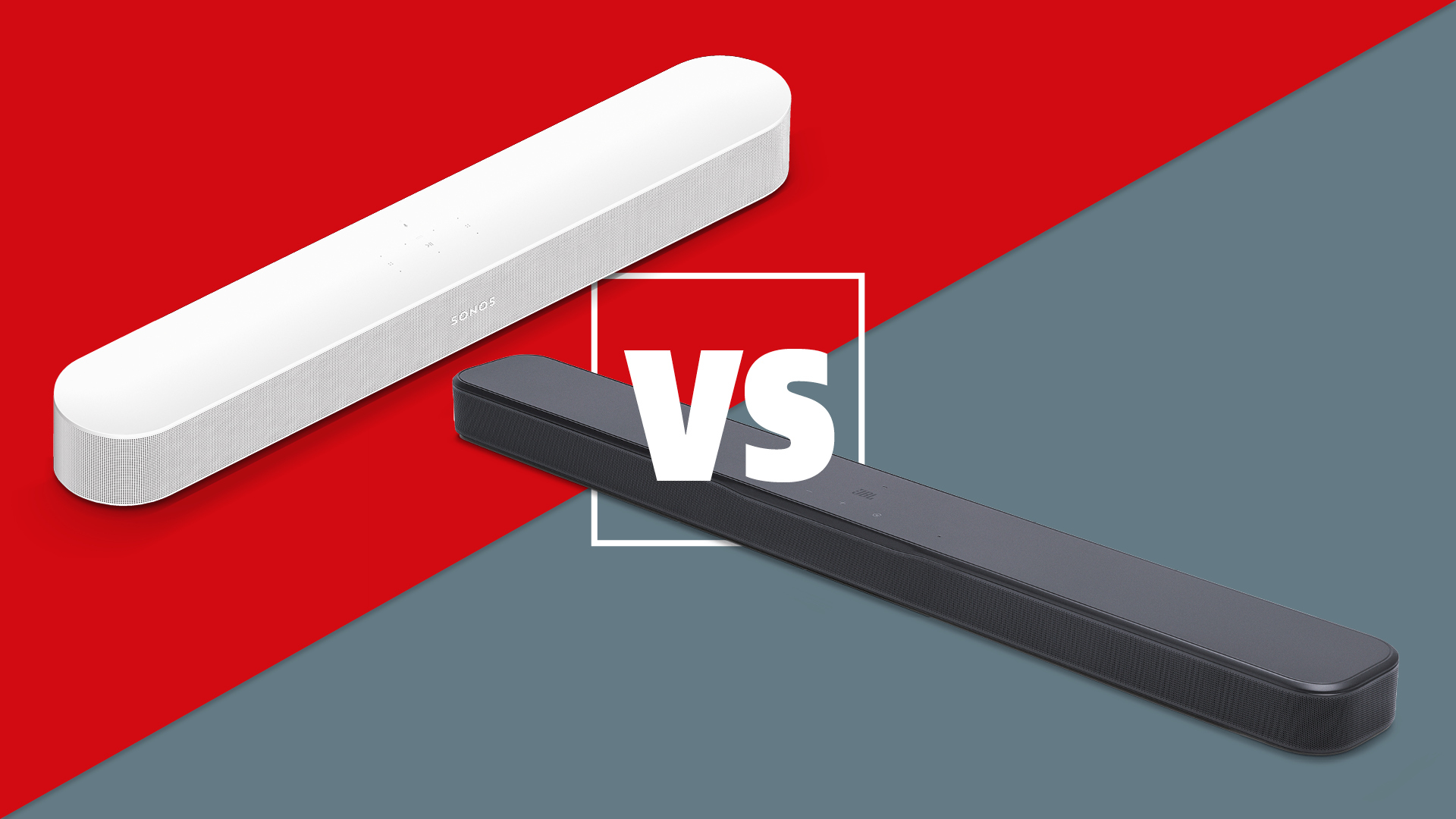What Hi-Fi? Verdict
The truly revealing sound of these modern-classic studio monitors will allow you to enjoy music in your own home as authentically as possible.
Pros
- +
True monitor sound
- +
Modern classic
- +
BBC heritage
Cons
- -
Difficult to adjust high frequencies
- -
No bi-wireable speaker terminals
Why you can trust What Hi-Fi?

This review and test originally appeared in Australian Hi-Fi magazine, one of What Hi-Fi?’s sister titles from Down Under. Click here for more information about Australian Hi-Fi, including links to buy individual digital editions and details on how best to subscribe.
Rogers was founded in the UK in the 1970s by Jim Rogers and, back in the day, was one of the top-three speaker manufacturers in the UK, not least because the company owned licenses to sell speakers designed by the British Broadcasting Corporation, of which the tiny shoebox-sized LS 3/5A is probably the best-known and is certainly the best-selling of the BBC designs.
But one of the best-sounding of the BBC-designed models for Rogers was the LS 5/9 that is the subject of this review. The very best-sounding of the BBC designs was the large LS 5/8, but it never really took off because (1) it was so large and (2) it was an active design, with amplifiers built in.
The LS 5/9 has been out of production for many years, not least because the Chinese company that now owns Rogers, the Wo Kee Hong Group, stopped UK production in the 90s and, when it moved Rogers production to China, simply ceased making this and many other classic Rogers designs, instead developing lower-priced models sold exclusively into the Chinese domestic market.
The great news is that the Rogers LS 5/9 is once more back in production, and that it’s being produced in the UK under the guidance of one of the design engineers who was working for Rogers back in the early 90s, Andy Whittle (see below).
Equipment
The Rogers LS 5/9 is a classic two-way bass reflex design that sees a 34mm diameter soft dome tweeter matched to a 210mm diameter polypropylene-coned bass/midrange driver.
The tweeter is an Audax TWO34XO that’s made in France, to the front face of which Rogers fits what it calls a ‘dispersion loading protective plate’ in the form of an enormously strong non-ferrous perforated dome. The dome not only protects the 34mm soft dome from potential damage, but also modifies its high-frequency output and dispersion.
I suspect that back in the day the BBC engineers added the dome simply to protect the tweeter from being damaged, because the LS 5/9 was intended to be used as a broadcast monitor in mobile studios, but I have no doubt that its effect on sound quality was factored in. It’s said that the dome was designed to be able to support the entire weight of the speaker cabinet, should it accidentally fall forward, and judging by the dome’s construction, I’m sure it could… and more!
The latest hi-fi, home cinema and tech news, reviews, buying advice and deals, direct to your inbox.
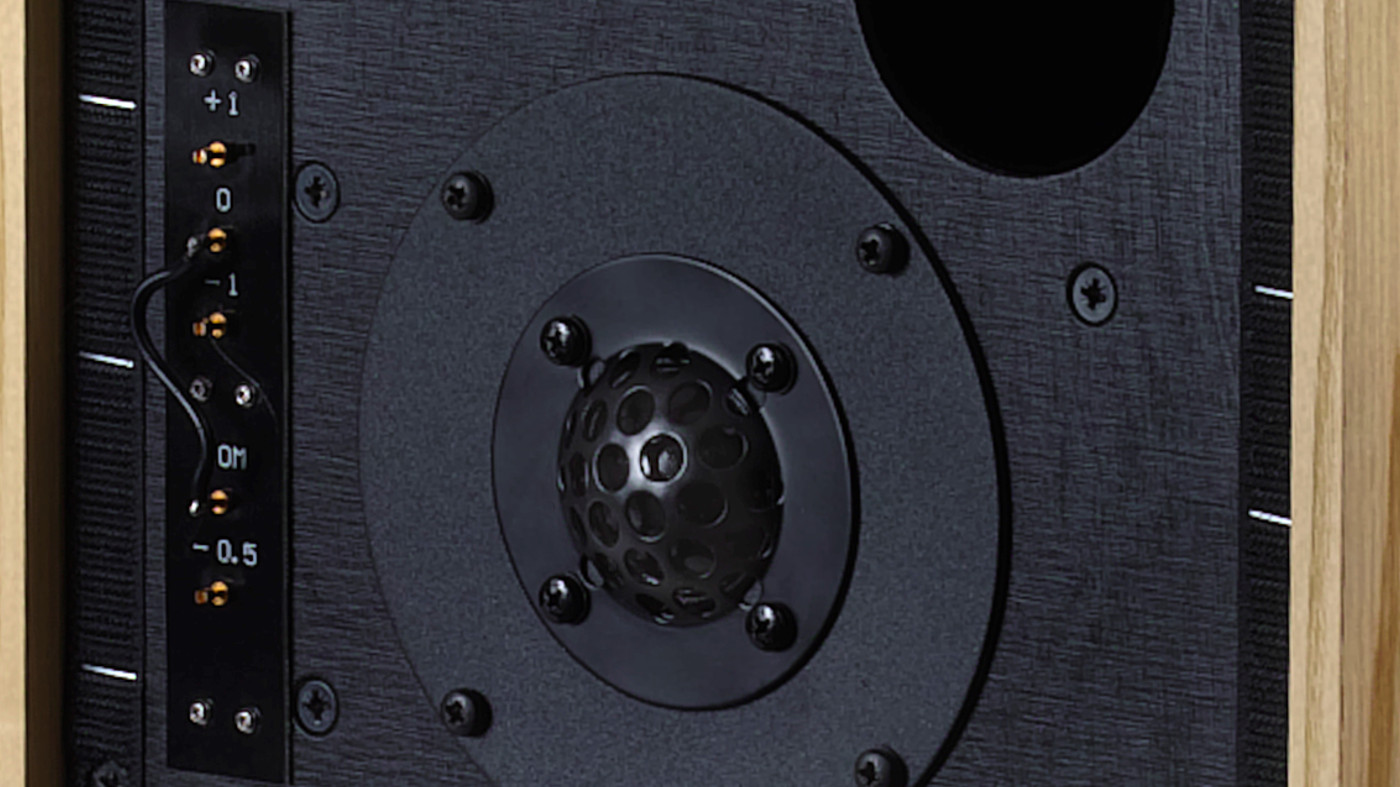
In any event, the dome is able to be removed, so you can choose to use it or not. The TWO34XO is actually a replacement for the original tweeter that was used on the LS 5-9 in the 90s, which was an Audax HD13D34H. This new version has a higher power-handling capacity (despite not using ferrofluid!) along with a more extended and rather more linear high-frequency response. But its frequency response is not that much more extended, because the operating bandwidth of the TWO34XO is rather different to that of most tweeters, since its very low resonance frequency (800Hz) enables it to be used down to a much lower frequency than most tweeters, the result of which is that it doesn’t go quite as high as most tweeters. It’s also rather unusual in that it has a replaceable voice-coil.
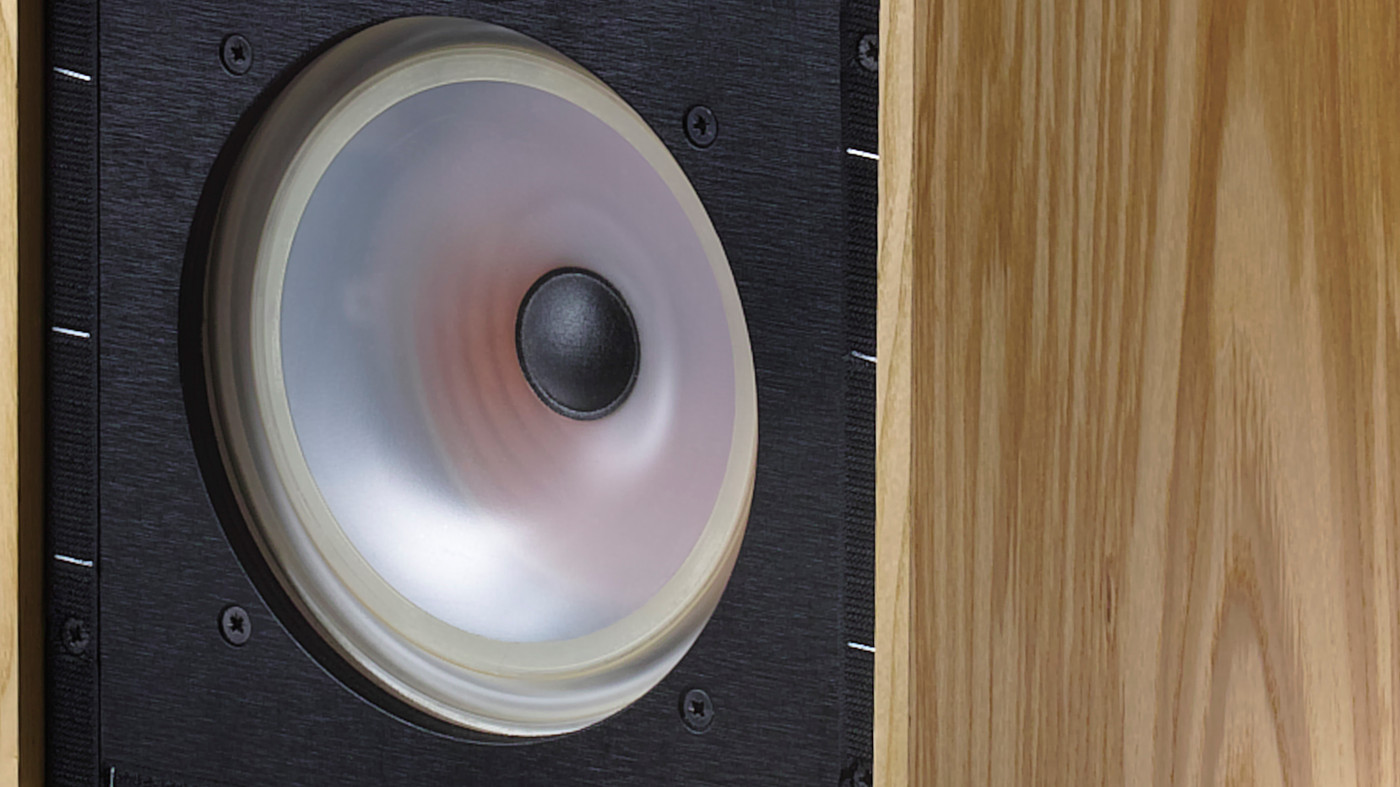
My recollection was that the original bass/midrange driver in the LS 5/9 was made by KEF, though I stand to be corrected. The one that’s now fitted to the Rogers LS 5/9 (pictured above) is one that Andy Whittle says he ‘reverse-engineered’ from the original and is having made in China. It certainly looks like the original, with an almost-see-through opaque polypropylene cone that despite being rated by Rogers with a diameter of 210mm has an actual cone diameter of 155mm. Even if it were 210mm in diameter, the driver is mounted from behind the baffle, so it has to deliver its sound through a hole cut in that baffle, and that hole has a diameter of 175mm which would therefore be a limiting factor. (The Theile/Small diameter of the driver is around 160mm, for an Sd of 202cm².) At the centre of the cone is a black fabric dustcap whose diameter of 30mm would seem to suggest that that this is also the diameter of the voice-coil.
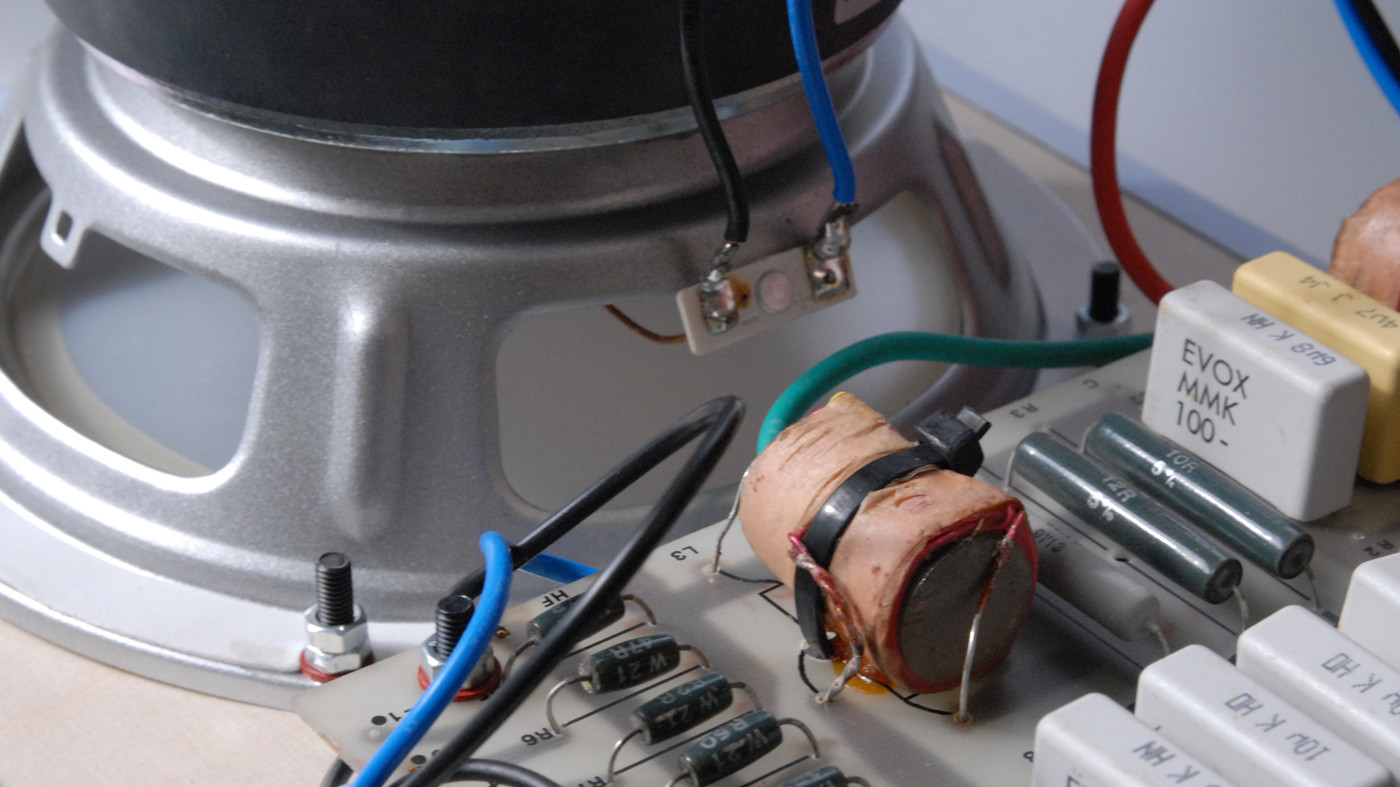
The frame (chassis) of the bass/midrange driver in the new LS 5/9 is completely different from that of the original, because whereas the original driver had a cast alloy frame, the one on this new LS 5/9 is made from pressed steel.
But if the tweeters are a newer version of the original, and the bass/midrange drivers are a reverse-engineered version of the original, the crossover networks on my review samples were totally original, having been manufactured back in the 80s by Rogers itself (actually, they were manufactured by Swisstone, which owned the Rogers brand at the time). This means that they use the famous Evox MMK capacitors which were made by Evox Rifa but became unavailable after that manufacturer was purchased by Kermet Capacitors. Whereas the original Evox MMK capacitors used metalized paper, the ones that are now available use metalized polyester. The paper versions are prized by audiophiles for their sound quality and go for big bucks on eBay.
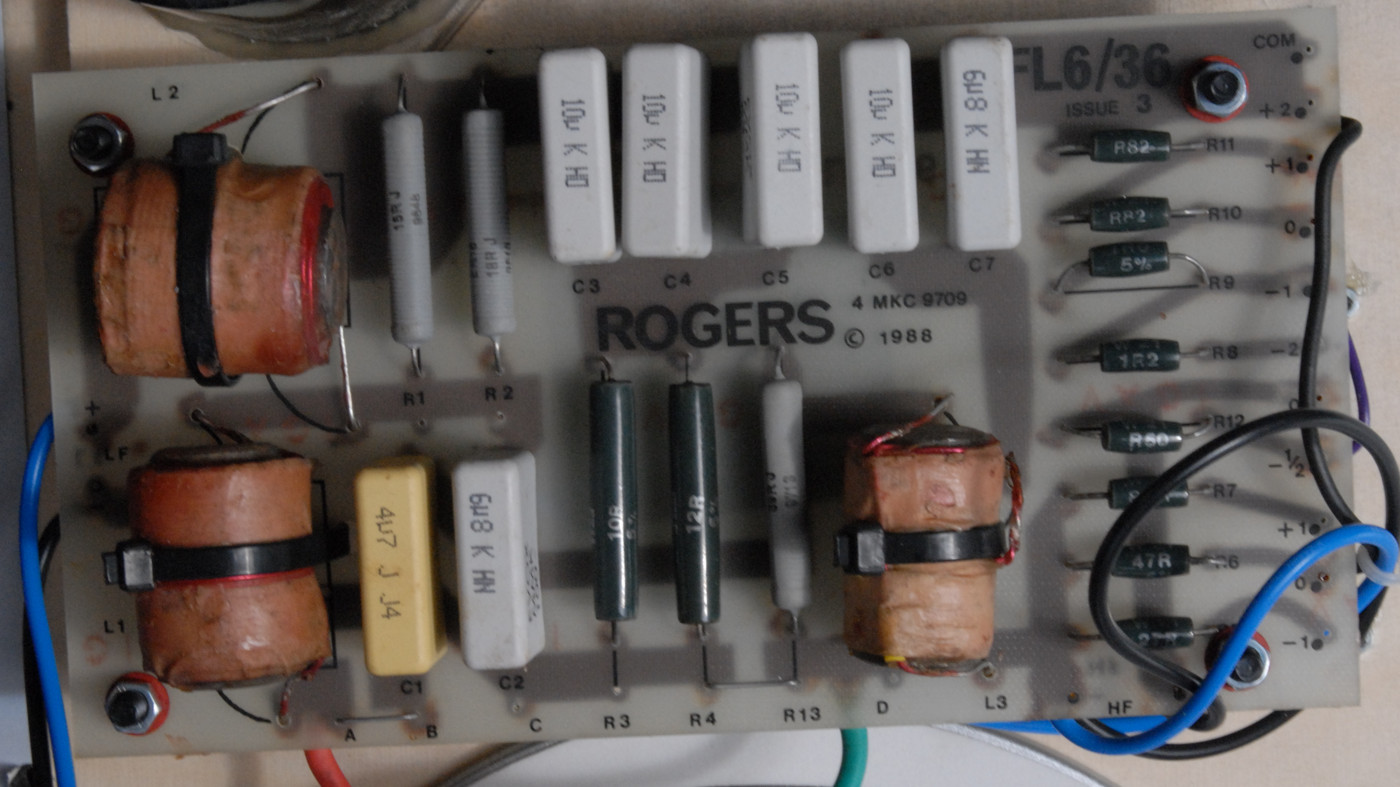
I was a bit surprised to find 30-year-old crossover networks inside a loudspeaker made in 2020, so I asked Australian Hi-Fi editor Greg Borrowman to do some digging for me. It turns out that when Rogers decided to put the LS 5/9s back into production it had a considerable quantity of the original crossovers still in stock (New Old Stock, or NOS as it’s known in the trade) so it used these old crossovers in its initial production run, of which my review samples (CLS30A/CLS30B) must have been a part.
They have apparently since run out of these already, but according to Andy Whittle, of Rogers, “the new crossovers are essentially the same” and deliver 18dB/octave slopes either side of a 3kHz crossover frequency. “Essentially the same” would mean three iron-cored inductors, five wirewound resistors, seven MMK capacitors and eight carbon resistors – so quite a complex design.
Whether it’s new or old, the crossover design itself is unchanged, and this design includes the ability to adjust the tweeter level though four different settings – +1dB, 0dB, –0.5dB, –1dB. However, if you want to make the adjustment you’re going to have to be pretty handy with a soldering iron, because in order to make it, you have to de-solder a fly-wire from one terminal on a printed circuit board (PCB) fitted to the front of the front baffle, then re-solder it to whichever of the other three terminals you wish to use. And of course you have to do this for both speakers.
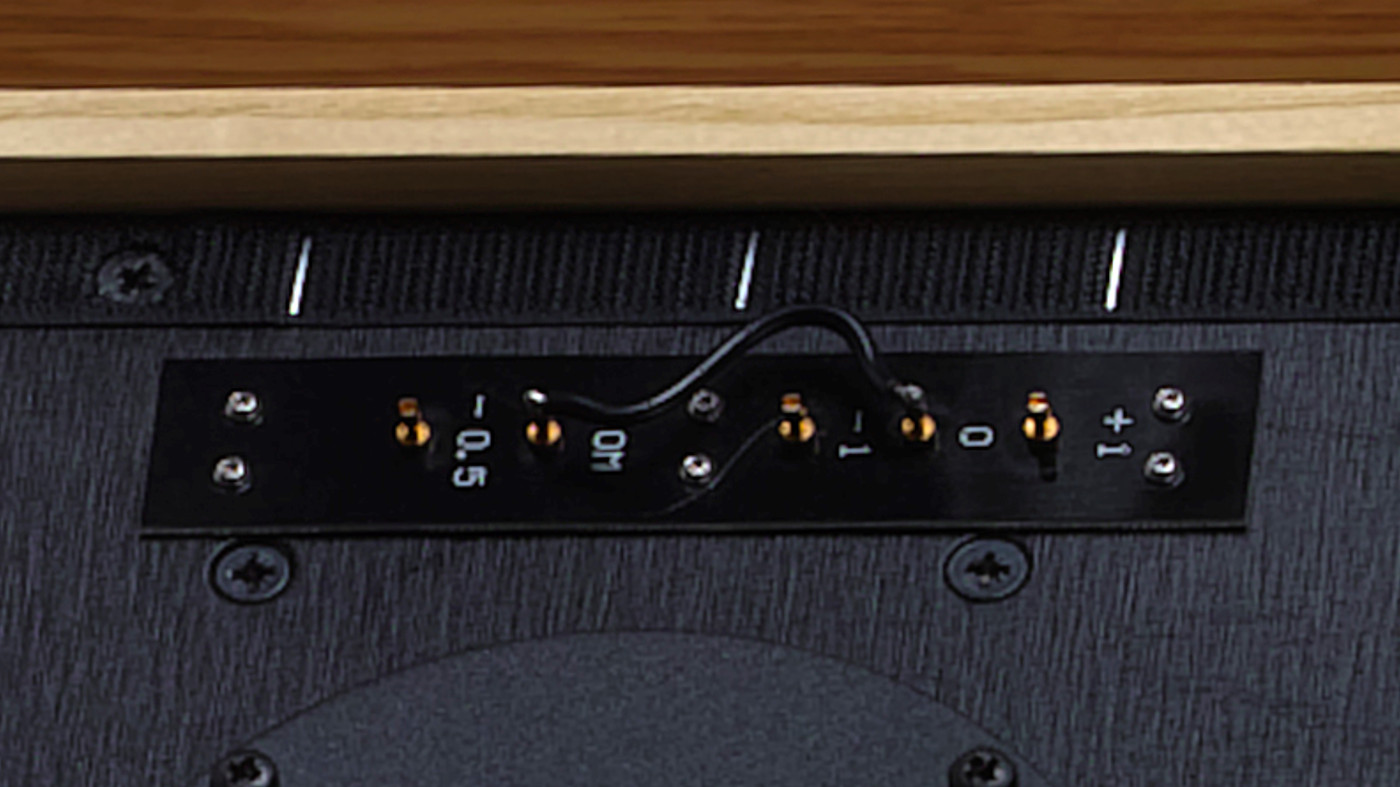
I have to admit that this is one aspect of the LS 5/9’s design that I personally would have updated, possibly by using gold-plated sockets and a re-insertable fly-lead, so changes could be made quickly, and no soldering would be required. But I guess that Rogers was aiming for authenticity. As for why a monitor speaker, designed and engineered for the highest accuracy possible, would have enabled the level of its high-frequency output to be adjusted in the first place is a bit of a mystery.
One long-toothed engineer of my acquaintance told me that the adjustment was provided to account for sample-to-sample variations (aka inconsistencies!) in the original Audax tweeter but I personally doubt this would have been the case, because it would have been easier and cheaper for Rogers to simply measure all the tweeters and reject the ones that were out of specification.
Or if this was true, and Rogers had to work around inconsistent tweeters, it still would have been easier and cheaper to measure them individually add the necessary attenuation resistor to the tweeter itself. But whatever the reason was back in the day, it is highly likely that brand-new modern Audax tweeters are far more consistent than the originals. But this is all idle speculation. I suppose the take-away from the provision of the adjustment is that irrespective of whether it makes sense or not, Rogers LS 5/9 owners will have the ability to modify the high-frequency output of their loudspeakers.

The front-firing bass reflex port on the LS 5/9 also appears to be identical to the original: a simple black plastic tube that is 64mm in diameter and 95mm in length. Again, I would have been tempted to flare the port at both ends, but Rogers is once again being faithful to the original design.
The cabinets are also built in the great ‘BBC’ tradition, being made of very thin material (9mm Russian birch ply) whose top, bottom and sides are all butt-joined and reinforced by four struts running front-to-back. As for the baffle and the rear panel, these slide inside the resulting structure where they’re fixed to struts running top-to-bottom and side-to-side.
Bituminous pads (from Clarity Acoustics) are stapled to all panels (including the baffle) to provide damping, and all panels except the baffle have egg-crate foam slabs glued over the damping. There’s also damping material sandwiched between the rear of the Audax tweeter’s magnet and the crossover PCB. Three standard wood veneer finishes are available for the LS 5/9 cabinets – olive, rosewood and walnut – but Rogers says other finishes are available via special order.
The frame that supports the thick, fairly rough-weave cloth used for the speaker grille is a ‘picture-frame’ style so there are no cross-struts to affect dispersion. The cloth on my sample was Black Tygan which is a heavyweight woven nylon. My understanding is that this cloth is no longer made, so presumably Rogers had some of this in stock as well.
The grille attaches via Velcro strips that run around the entire periphery. Removing the grille requires that you grasp a small cloth loop that protrudes from the bottom of the grille and pull moderately hard. Sustained pressure does the trick, so the Velcro loosens its grip gradually. But I really didn’t like the look of the loop jutting out from the bottom of the grille.
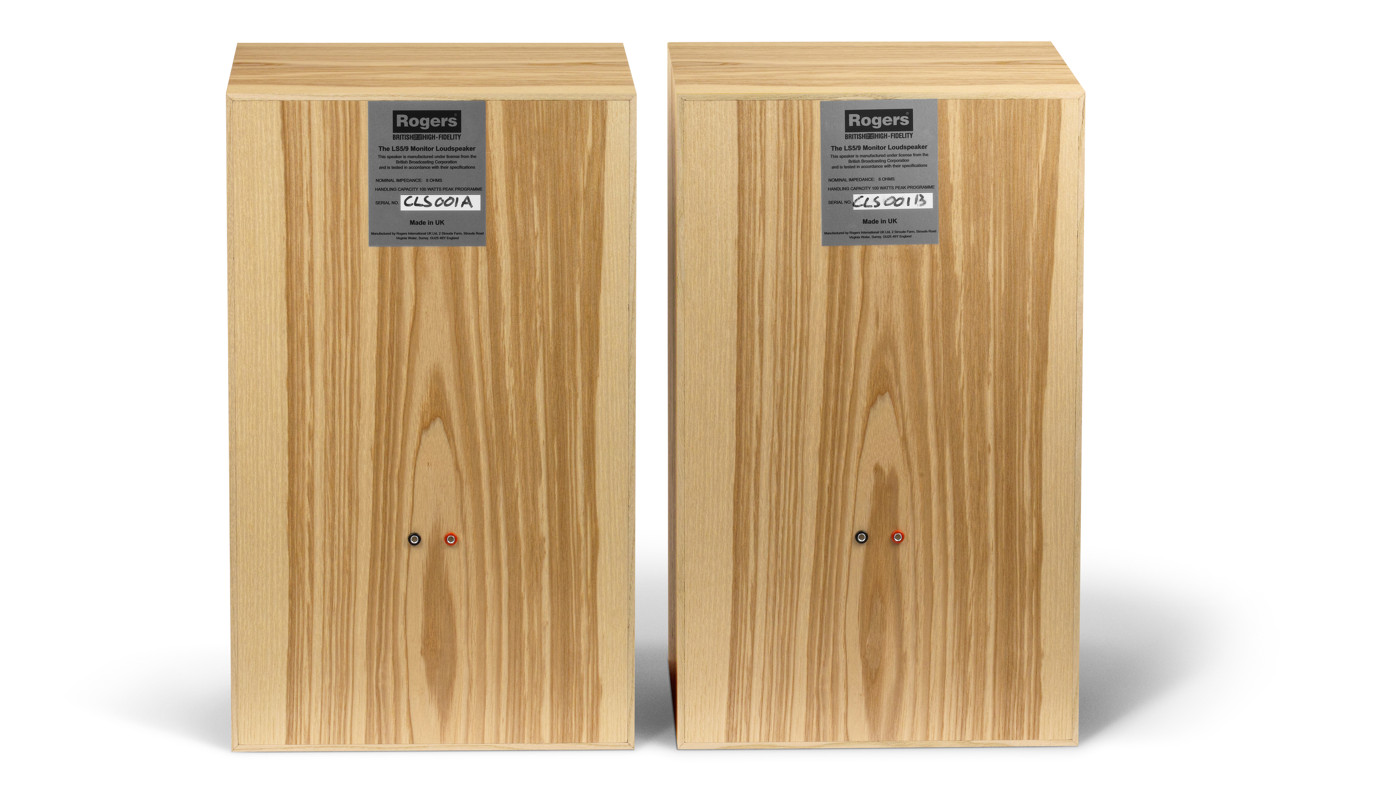
The rear of the speaker is almost completely smooth, because there are no protruding speaker terminals to be seen. Instead there are just two 4mm-diameter banana sockets that are almost completely recessed inside the cabinet, meaning that no matter what type of speaker cables you use, you’re going to have to terminate them in banana plugs.
As for the cabinets themselves, they’re 460×275×285mm (HWD) and each one weighs 12kg. When the BBC used the LS 5/9s they placed them either on open stands or on open frames fixed to a wall, so both are viable options for home use.
Rogers' history
There are two great resources available to anyone interested in the history of Rogers leading up to its purchase by the current owner, Richard Lee of the Wo Kee Hong Group.
One of these, written by an ex-managing director of Rogers is here.
The other is here.
Plus, of course, there is a lot of information at the official Rogers website.
Listening sessions
I can guarantee that the first time you listen to a pair of Rogers LS 5/9s you will immediately wonder to yourself how so much great sound could be issuing from such a relatively small pair of loudspeakers. I will also guarantee that once you’ve listened just a little longer, you’ll have forgotten your immediate wonderment, indeed you’ll have forgotten about the speakers altogether. You’ll instead be just lying back, with your eyes closed, totally relaxed, enjoying the music.
Because that’s what these speakers do. Their delivery of music is so smoothly presented, so beautifully balanced and so sweetly delivered that they’ll just sing to you in your listening room.
The level and extension of the bass you will achieve in your room from the Rogers 5/9s will of course depend on how you decide to mount them and where in your room they’re positioned, but if you get it right, you’re unlikely to yearn for more unless you’re into pipe organ music, techno or classical orchestral music at high volume.
And if you do fall into one or more of these categories I would suggest adding a subwoofer. I used my review pair of LS 5/9s on open metal frames a friend of mine welded up for me for use with a similarly-sized pair of UK speakers that I have long since sold. (The buyer wanted the speakers, but not the frames… and I have to admit they looked a bit rough, even though I thought I’d painted them beautifully.)
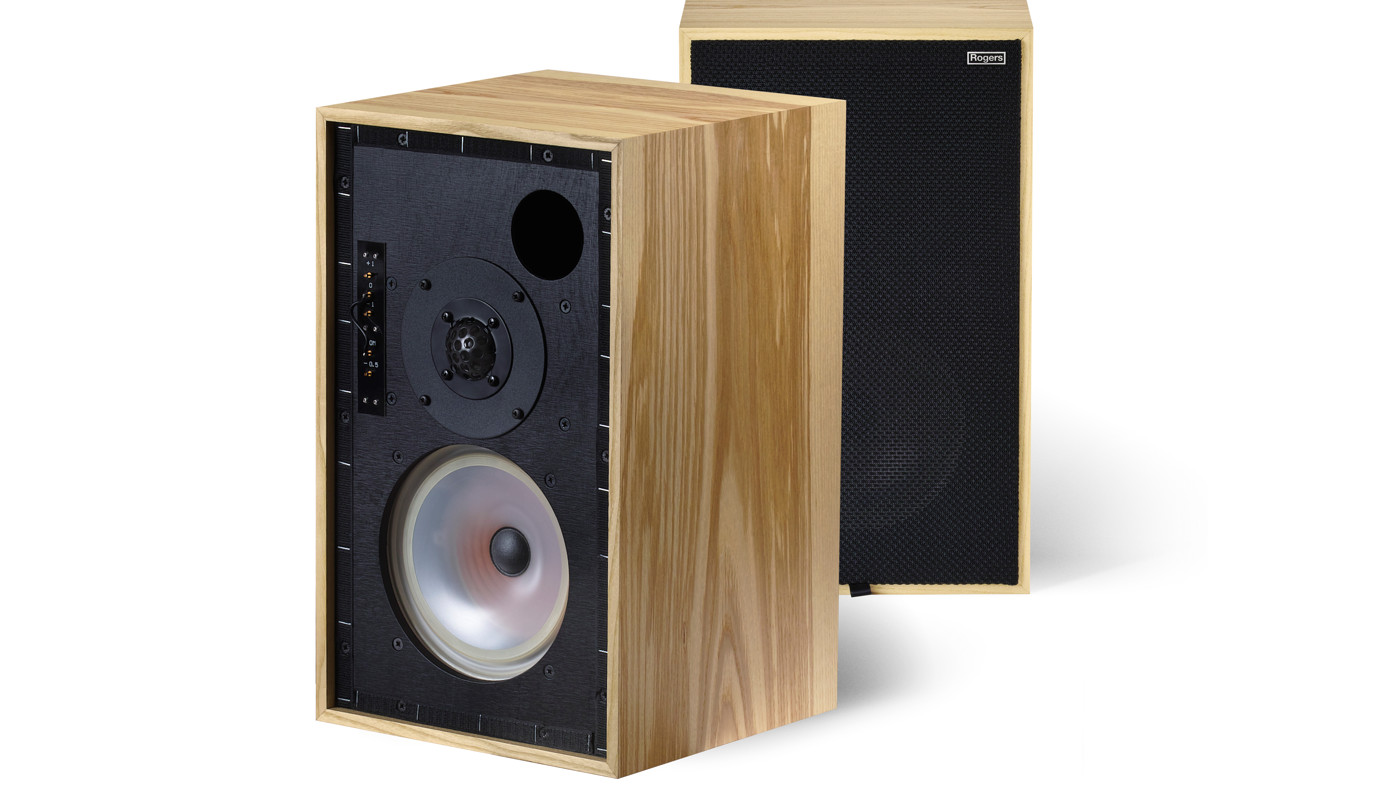
I found the Rogers 5/9s were more than capable of delivering the sound of a kick drum at usefully high volume levels and also the lowest notes on an electric bass guitar at similar levels, which in real terms means that the bass delivery will be more than sufficient to cover the lowest frequencies most people are going to need to replay when playing their favourite music at the levels they’re most likely to be playing it. Not only can the 5/9s deliver great bass at these levels, they do so with impressively low distortion and more than a goodly amount of speed. Indeed I would be more than happy to describe the bass as being lively to the point of being bouncy!
And if you don’t know what I mean by lively, or bouncy, if you play Paul McCartney’s Silly Love Songs (the 2014 re-master on Wings at the Speed of Sound, and track 6, not the demo) through the Rogers 5/9s you will know what I mean immediately, because not only will you hear the bounce in the music, but you too will also be bouncing around in your chair and tapping your foot. The bass line on this song (played by McCartney of course) is absolutely fabulous, a real masterclass in bass playing for both the composition and the performance.
McCartney himself was really pleased with it. When he was telling Billboard magazine that he wrote the song to answer people who accused him of being soppy, he felt he had to add an end note: “By the way,” he told them "Silly Love Songs" has a good bass line.” It also has some superb drumming from Joe English who, despite his surname, was an American. Incidentally, the backing vocals are by Linda McCartney and there’s not an out-of-tune note there, it’s quite lovely, in fact.
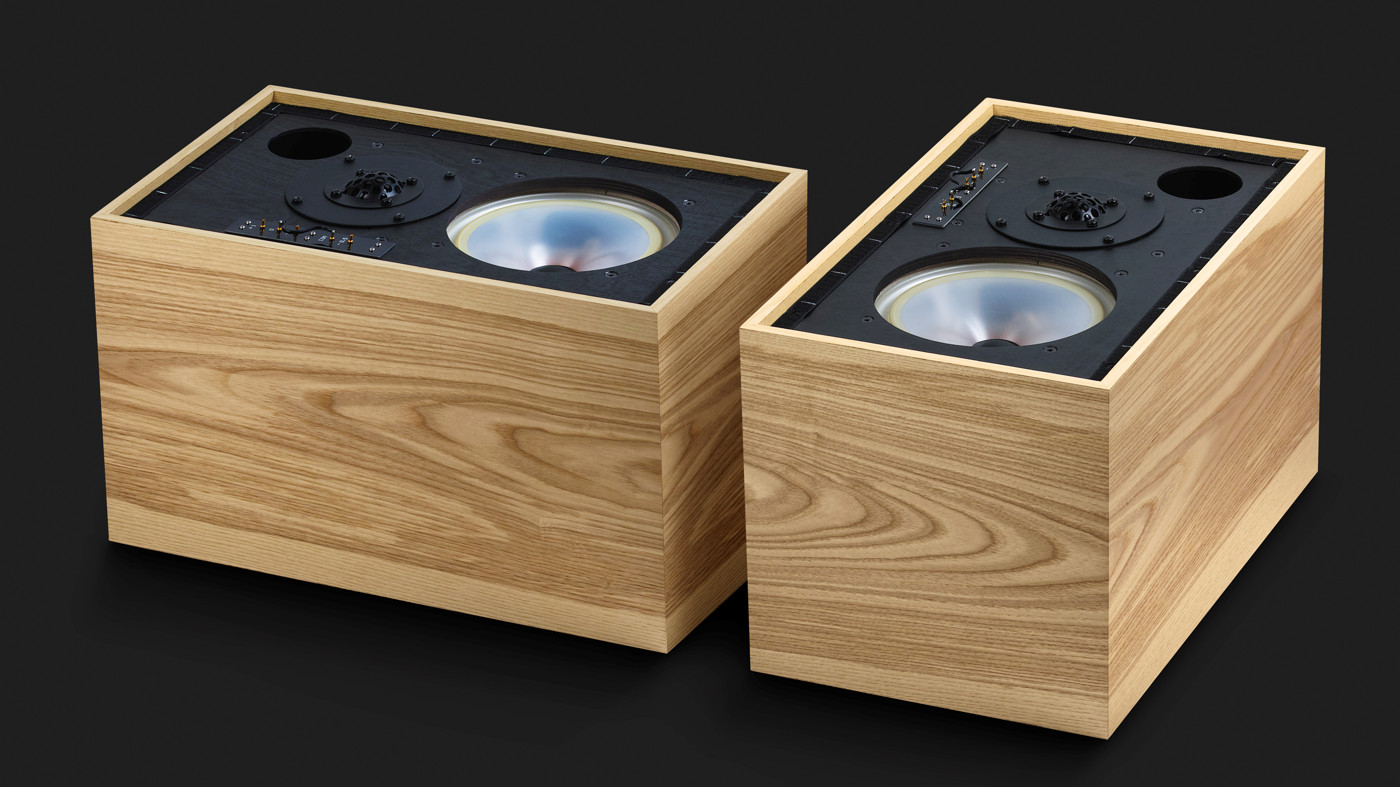
There’s also a bouncy bass line (and more bass) on “Forget Me Nots” by Patrice Rushen, most particularly on the title track, but this is a good album to also appreciate the midrange qualities of the 5/9s using the crystal-clear sound of Patrice’s voice, beautifully recorded.
You can also hear the incredible speed of the speakers, those hand-claps are right out there, then how about the sound of the sax break around three minutes in? Wow! But it’s the bass that’s the star, a totally unique and instantly memorable contribution to the album by none other than Freddie Washington. You’ll know this song even if you haven’t heard the album by the way, because it features on the Tom Hanks film Big and Will Smith’s film Men in Black while jazz guitarist Lee Ritenour has a cover version on his album Smoke 'n Mirrors.

Speaking of crystal clear sound and midrange, one of my favourite testers for these traits is The Soul Sessions, an album recorded by Joss Stone back in 2003. If your speakers are at all errant across the midrange, this album is going to reveal it big-time. If the mids are peaky, it’s just going to sound edgy. If they’re forward, it’s going to sound bright. If they’re recessed, it’s just going to sound lifeless. It didn’t take me more than spinning up the very first track, The Chokin’ Kind, to hear that the Rogers 5/9s had the right stuff to deliver tuneful, accurate midrange and that I’d be right to listen to the album all the way through.
While I was enjoying her voice and the sound of the backing band, it did seem a little unfair that it’s now the most famous version of this song despite Joe Simon having won a Grammy for it. It’s also a little incongruous that an album titled Soul Sessions (and the follow-up Soul Sessions 2) is recorded by a lass born in Kent, in the UK, whose real name is Joscelyn Eve Stoker. But I guess if you’re as talented as she is (and she’s also a well-known actress) who was singing soul and R&B as a small child, it’s really not in the least surprising.
Despite the success of The Chokin’ Kind for her, it was the second track on this album, Super Duper Love, that was the biggest hit from it. Listen and you’ll hear why. Yet another great bass line, whose rhythm and pace are delivered with penache by the Rogers 5/9s, a stonkingly great Hammond sound and a lead guitar that is oh-so-precisely pitched are just the start. Listen to how the 5/9s deliver Stone’s breath gasps, and the way she twists her inflexions and the way she forces her voice and you’ll know immediately why midrange accuracy is so important, and that these speakers have it in spades. My favourite track on this is actually Fell in Love with a Boy, but they’re all good.
I personally find that I can testing the high-frequency performance of any loudspeaker with recordings that have violins or a drum-kit, which means I have a lot of choice. If the violin sound is realistic, and the cymbals of the kit sound like cymbals, that’s mostly all I need. But if I want to get all fancy I’ll use one of my favourite albums, the original of which I’ve owned for nigh-on twenty years (and the “audiophile” version since it was released). I was somewhat pleased that The Guardian once included this album on its list of “The 101 strangest records on Spotify.”

OK, I’ll put you out of your misery, my “fancy” h.f. tester is David Hyke’s album Hearing Solar Winds recorded with The Harmonic Choir. The entire album revolves around an ancient form of singing practised within tantric Tibetan Buddism that’s usually called ‘throat singing” or Mongolian Khöömii (pronounced hoo-mee). The throat singing technique requires the singer to create first create a single low-frequency sound, then add a second one.
The two low-frequency sounds then mix to create a third, extremely high-frequency sound, so high it sounds like someone running their finger around the edge of a crystal glass. Not only are these high frequency sounds perfect for loudspeaker testing because they’re so high in frequency and so pure, their very purity makes them glorious to listen to.
But don’t take my word for it. This is what The Guardian’s Rob Fitzpatrick said of the album: “The Harmonic Choir were artists-in-residence at New York's Cathedral of St John the Divine for ten years and this was recorded live there. The church's rich reverb makes the choir's incredible music sound like a Gregorian chant, albeit one performed by an alien race. Frankly, Hearing Solar Winds will blow your mind. And you'll like it.”
Listening to this album via the Rogers LS 5/9s, I was not only captivated by the sound, as always, but captivated by their presentation of it. All the sounds on the album were there, from the very lowest to the very highest, at the correct pitch and the correct volume and all the while, the speakers also delivered the incredible sense of space and ambience of the cathedral itself. And in the moments of silence, the acoustic emptiness is complete, while not being totally empty. You have to experience it for yourself. It is truly otherworldly. Turn up the volume and have your mind blown. But watch out for those prayer chimes!
Verdict
Way back in 1533, Sir Thomas More wrote, “And as he myght tell vs, that of Poules chyrch we may well se the stones, but we can not se the chyrce. And then we may well tell hym agayne, that he can not se the wood for the trees.”
These days, a great many audiophiles are falling into that trap of which Sir Thomas warned nearly 500 years ago – of not being able to see the wood for the trees – or, if you’d like me to put it another way, of getting so mixed up in technology and specifications of audio components that they lose sight of the fact that the entire audiophile ecosphere is intended to do one thing and one thing only, which is to allow us to enjoy music in our own homes as authentically as possible.
I think that were he alive today, Sir Thomas would have approved of the Rogers LS 5/9s, because their performance is such that they reveal the trees, the woods, the forest and all that lies beyond! #
In-depth laboratory test report
Newport Test Labs measured the frequency response of the Rogers LS5/9 as being 65Hz to 21kHz ±4dB with the tweeter’s level set to 0dB, which is the response that’s shown in Graph 1, below.
You can see that the frequency response almost tracks the 90dBSPL graphing line right up to 6.5kHz after which there’s a slight lift in the tweeter response that comes back down to the 90dBSPL line at about 12kHz then drops below it and remains at the same level out to 18kHz after which it starts rolling off.
If one were to remove this lift between 6.5kHz and 12kHz, the overall frequency response would have been 65Hz to 21kHz ±3dB. You can see that the response is spectrally balanced, and across the most important region of the audio band, from 85Hz to 6.5kHz, the response is within ±2dB, which is very flat.
Graph 2 shows the anechoic high-frequency response in more detail, thanks to zooming in on the high-frequency region, plus it also shows the effect on the response of the loudspeaker grille. You can see that using the grille largely removes that high-frequency lift referred to in the first paragraph, but introduces a significant dip in the response centred at around 16kHz.
Notwithstanding that the high-frequency lift could be compensated for by adjusting the tweeter level, I would suggest using these speakers with their grilles on, despite the dip that’s introduced by doing so, not least because the dip is so high in frequency and so small that I expect it would be unnoticeable, even in a direct A–B comparison.
The low-frequency output of the Rogers LS5/9 design is shown in Graph 3, using a nearfield measurement technique that simulates the response that would be obtained in an anechoic chamber. You can see that the bass driver starts rolling off below 100Hz to a minima at 46Hz. Normally, I would expect maximum output from the port at this same frequency but as you can see from the red trace showing the port’s output, it peaks somewhat lower in frequency, down at 38Hz. The port also has a wider than normal operating bandwidth, delivering considerable output from 30Hz right out to 100Hz.
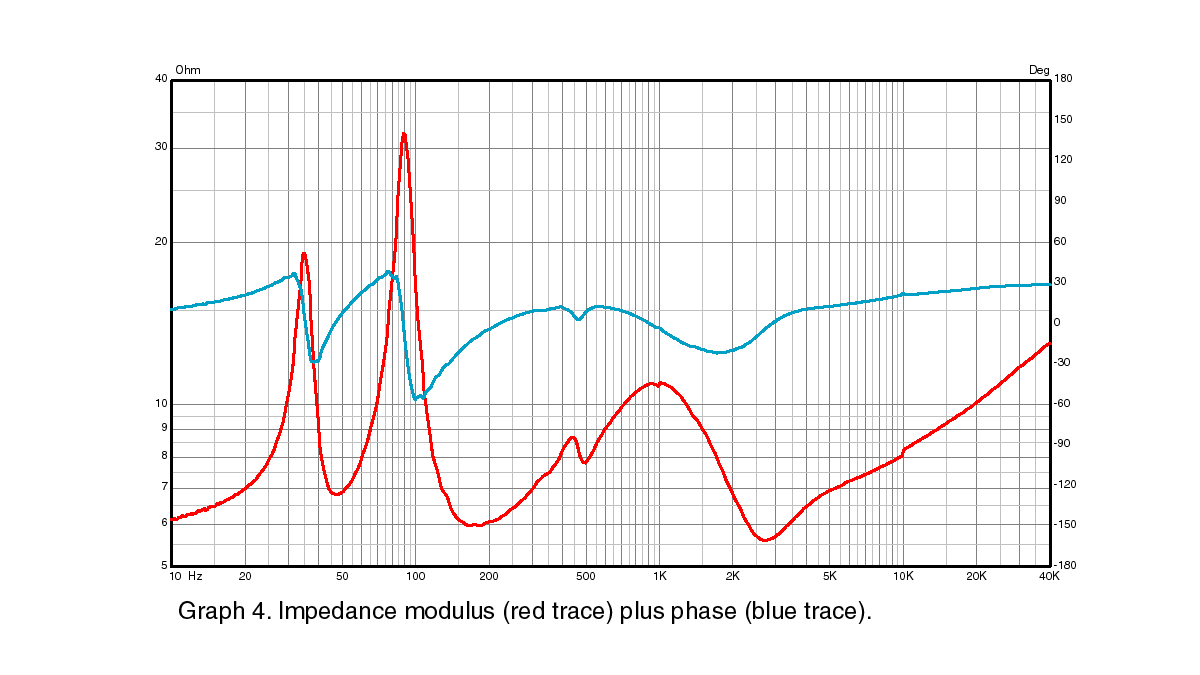
The impedance of the Rogers LS5/9 is shown in Graph 4 and you can see straight away that it’s a relatively high modulus, right across the audio band, which is a little unusual to see these days. Modern designs tend to have rather lower overall impedances. The classic double-hump characteristic of the bass reflex alignment has the peakd at 35Hz (19Ω) and 90Hz (32Ω) with the saddle between them at 47.5Hz just dipping below 7Ω indicating the frequency below which the design would not deliver any appreciable output.
At you can see, the impedance remains entirely above 6Ω except between 2.3kHz and 3.4kHz where it drops slightly below to a minimum of 5.6 Ω at 2.6kHz. There’s a significant kink in the impedance trace at 400–500Hz which would suggest a cabinet resonance, the effect of which is shown on Graph 3. The phase of the speaker is very well-controlled, as you can see from the blue trace representing it.
Graph 5 shows the in-room response Newport Test Labs measured for the Rogers LS5/9. It’s this response that would reflect what you would hear when the speakers are on stands in your listening room. You can see this response is 70Hz to 20kHz ±3dB. You could gain some low-frequency extension by either by moving the stands closer to a rear wall, or by positioning the speakers on wall-mounts.
Newport Test Labs has included a composite response (Graph 6) that overlays the various graphs shown so far, extending the capture for the low-frequency driver and the port. You can see the resonance doesn’t affect the on-axis response. However, you can see a sight affect on the on-axis response caused by a port resonance at around 1.3kHz. It is, however, very small.
Newport Test Labs measured the sensitivity of the Rogers LS5/9 as being 88.2dBSPL at 1 metre for 2.83Veq using its standard technique, which is a result that’s 1.2dB higher (better!) than the 87dBSPL claimed by Rogers, and puts the design into ‘above average efficiency’ territory, so it will make best use of your amplifier power.
Indeed, this excellent efficiency, combined with the higher-than-usual impedance, and the fact that the impedance continues to rise after crossing through 8Ω at 10kHz, will make the LS5/9 an exceptionally easy load for all amplifiers no matter what output devices they use, or the type of output stage.
The Rogers LS 5/9 is a classic example of what every loudspeaker engineer aims for in a design: a smooth extended frequency response, above-average efficiency and an easy load for any amplifier type. Those BBC engineers certainly knew what they were doing, and Rogers has done them proud.
Australian Hi-Fi is one of What Hi-Fi?’s sister titles from Down Under and Australia’s longest-running and most successful hi-fi magazines, having been in continuous publication since 1969. Now edited by What Hi-Fi?'s Becky Roberts, every issue is packed with authoritative reviews of hi-fi equipment ranging from portables to state-of-the-art audiophile systems (and everything in between), information on new product launches, and ‘how-to’ articles to help you get the best quality sound for your home.
Click here for more information about Australian Hi-Fi, including links to buy individual digital editions and details on how best to subscribe.

